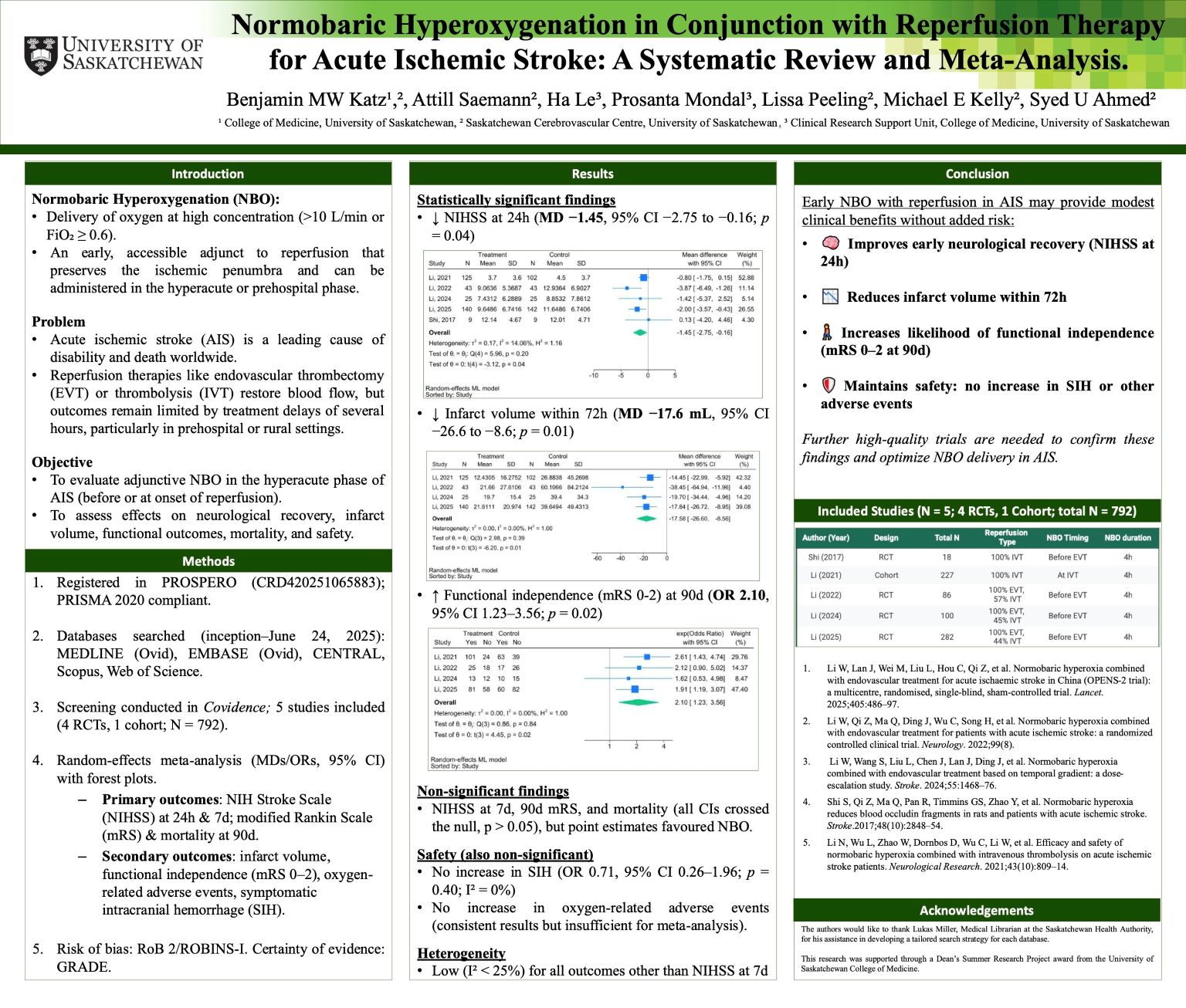
Normobaric Hyperoxygenation in Conjunction with Reperfusion Therapy for Acute Ischemic Stroke: A Systematic Review and Meta-Analysis
Benjamin Katz
Introduction: Acute ischemic stroke (AIS) is a leading cause of disability and death. While
reperfusion therapies (intravenous thrombolysis and endovascular thrombectomy) restore blood
flow, outcomes remain poor. Normobaric hyperoxygenation (NBO), non-invasive delivery of
high-concentration oxygen, may preserve the ischemic penumbra as an adjunct to reperfusion.
Methods: We conducted a PROSPERO-registered review (CRD420251065883) following
PRISMA 2020 guidelines. MEDLINE, EMBASE, CENTRAL, Scopus, and Web of Science
were searched to June 2025. Five studies (four randomized trials, one cohort; 792 patients) were
included. Random-effects meta-analyses were performed, with risk of bias assessed using RoB
2/ROBINS-I and certainty with GRADE. Outcomes included early neurological improvement
(NIHSS), functional outcome (mRS), mortality, infarct volume, symptomatic intracranial
hemorrhage (SIH), and adverse events.
Results: NBO improved NIHSS at 24h (MD -1.45, 95% CI -2.75 to -0.16), reduced infarct
volume (MD -17.6 mL, 95% CI -26.6 to -8.6), and improved functional independence at 90d
(OR 2.10, 95% CI 1.23–3.56). Other outcomes favored NBO but were not statistically
significant. No increase in SIH or adverse events was observed.
Conclusion: Adjunctive NBO may improve neurological recovery, functional independence, and
reduce infarct volume, without increasing risk of adverse events in AIS.
